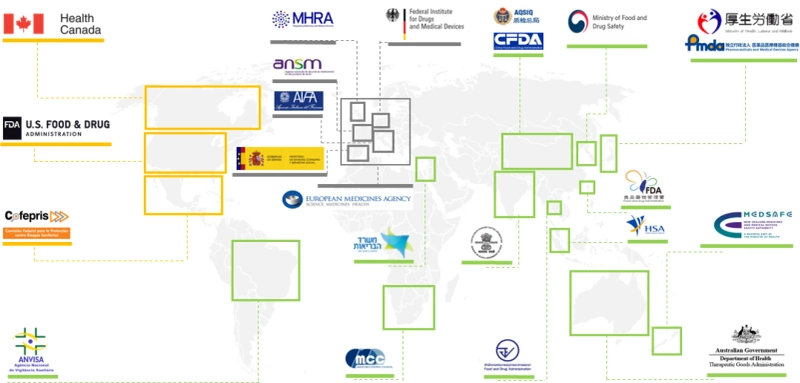Technical advances and innovation in design within the medical devices industry have prompted regulatory authorities to update the laws governing various aspects of the development, manufacturing, design and approval of such products. Further, it is imperative that various stages of medical device development and production are closely monitored and regulated in order to avoid serious and / or life-threatening consequences. In this regard, several regulatory agencies and organizations across the globe have established standard operating protocols, regarding the sale and use of these devices. Reimbursement is another integral aspect to the successful sale and distribution of medical devices. Similar to regulatory compliance, healthcare authorities require continued clinical and economic data collection, such as observational studies and cost benefit / use analyses, as well as dissemination of the information collected in deciding reimbursement for medical devices. Presently, almost every country has its own regulatory authority, which issues guidelines to regulate the development, distribution and reimbursement of medical devices. Such government-sponsored initiatives also oversee licensing, registration, manufacturing, marketing and labeling of medical devices within their respective jurisdictions. Therefore, it is crucial for a developer to understand and comply to the evolving regulatory environment in order to successfully market its offerings.
General Regulatory and Reimbursement Guidelines for Medical Devices
The introduction of a new medical product in the market involves extensive medical communication, reimbursement, and continued compliance with regulatory requirements. These are critical elements of the business planning process and therefore, each area requires early planning. Significant amount of time and effort is required to obtain approval from a regulatory body, however, clearance alone does not guarantee a revenue stream. Majority of the payers and providers now require stakeholders to demonstrate both clinical and economic value of their new products owing to the fact that lack of appropriate strategies to understand the economics of the healthcare marketplace can relegate a potentially successful, innovative technology to commercial failure. Thus, preparations should begin early in the product development process; development of a comprehensive strategic regulatory and reimbursement plan can help stakeholders to identify economically attractive indications and market opportunities.
It is worth highlighting that in order to ensure the robustness of design and manufacturing processes, as well as product quality, several industrial standards have been established that need to be followed by stakeholders involved in the manufacturing process of products (including medical devices). Further, these industrial standards play an essential role to protect the product conformations and harmonize the respective national / international regulatory requirements. There are several management standards, which are applicable to medical device manufacturing. The most prominent standards have been listed below:[1]
There have been some modifications in the industrial standards that is likely to impact the medical device manufacturing in coming years. These changes have been highlighted below:
It is mandatory for medical device developers and manufacturers to implement ISO 13485:2016 quality management system by the end of March 2019. This update, which was published in March 2016 and had a transition period of three years will replace ISO 13485:2012.[2] The ISO 14155 is anticipated to be updated in 2019 and is likely to have implications on various segments, such as essential requirements for clinical risk management and clinical investigation audits of medical devices.[3][1] Source: https://www.nqa.com/en-us/certification/sectors/medical-devices-services
[2] Source: https://www.rcri-inc.com/developing-effective-reimbursement-strategy-build-will-come/


